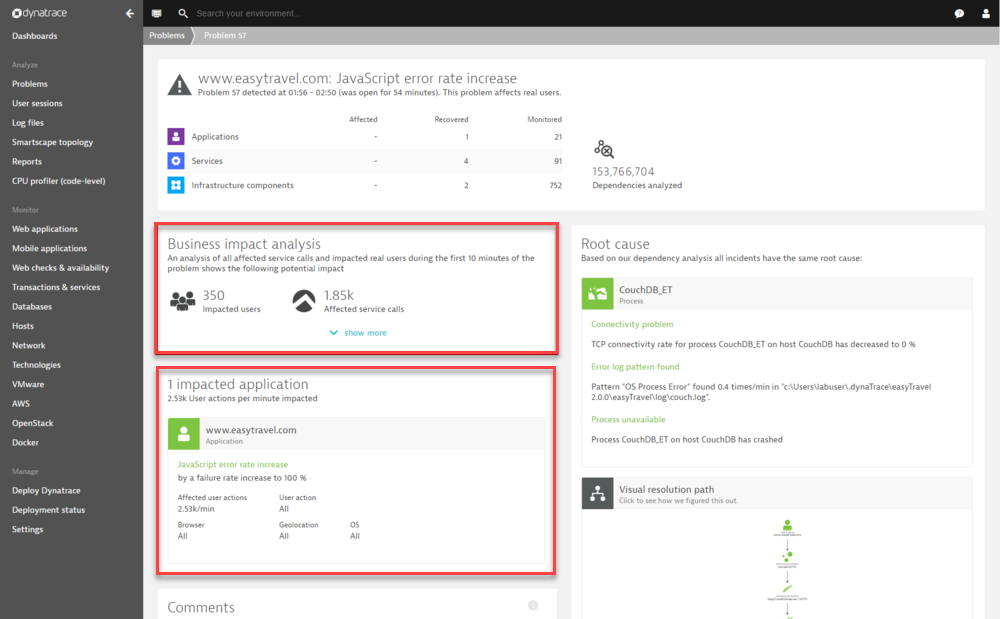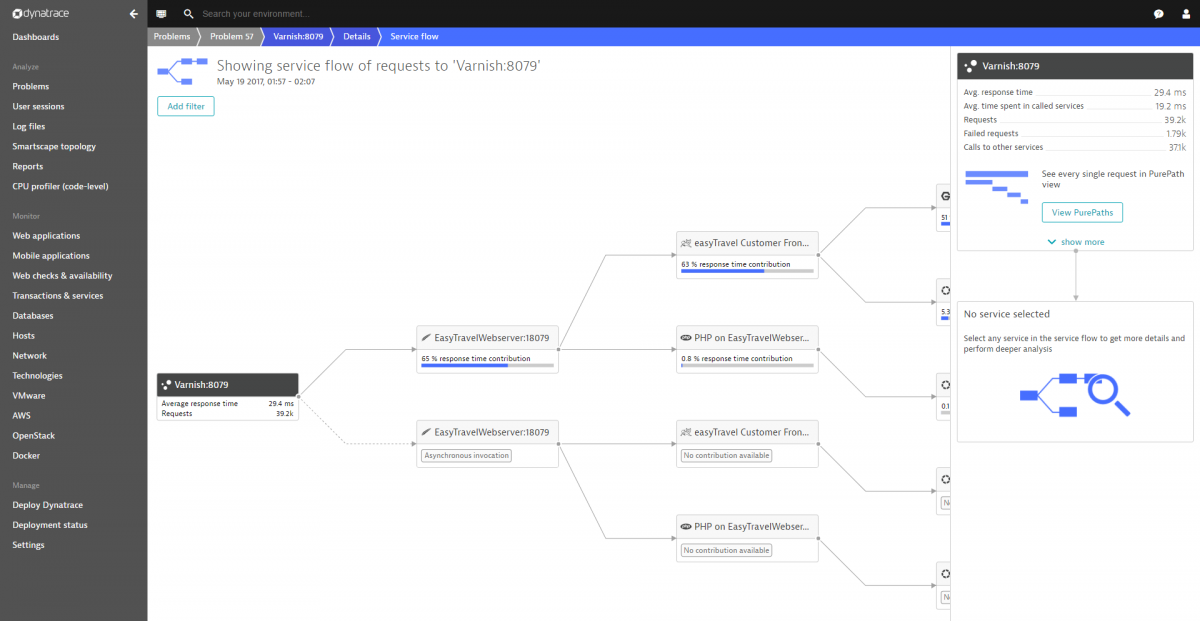Impact analysis
Each problem overview page contains impact analysis of all direct consequences of the problem (for example, the slowdown of a service) that are revealed based on automated and multidimensional performance baselining.
While baseline violations serve as great trigger events for initiating deeper problem analysis, not all real user impact can be detected based solely on statistical alerts. This is why many problems discovered by Davis (the DESK AI causation engine) provide an Impact analysis section that shows you the impact that the problem has had on your customers and service calls.
Imagine that one of your backend services begins to slow down and Davis automatically detects and reports on the slowdown. This would be shown within the Impact analysis section on the problem overview page. Separately, Davis detects that a process has been shut down for several minutes. However, because your applications and entry-point services are currently handling these issues gracefully, you’ll likely miss out on the critical insight that your customers are unable to log into your application or buy your products! With business impact analysis however, a complete analysis of all affected backend service calls brings this and related issues to your attention so that you can resolve them quickly.
Note that business impact analysis isn’t triggered for all detected problems. For example, business impact analysis isn’t included for problems that are detected with synthetic tests, as the result would be only a single transaction. Business impact analysis is also not included for infrastructure-only events, such as CPU spikes, because no relevant transactions exist for analysis.
The Business impact analysis section is only displayed when relevant transactions are available for analysis. Business impact analysis only makes sense for customer-facing web or mobile applications, custom applications (for example, a self-service ticketing terminal), or entry point services. As to entry-point services, say for example that you have a weather forecast service for which no web page is available. Maybe this entry-point service is used by a news site like CNN. Thus, if the service is unavailable, your organization will experience a business impact as all requests to the service are failing.
Business impact analysis gives you the information you need to, for example, ignore issues that only affect a single user while focusing your efforts on business relevant problems that affect hundreds of real users. Business impact analysis also helps in uncovering problems that would otherwise be impossible to detect based on statistical evidence alone (for example, customers being unable to log into your application).
Example of a response time degradation problem
The example below shows a Response time degradation problem. Here there is an impact to an application (www.easytravel.com) and a failure rate increase to 100%.

Business impact analysis, on the other hand, collects and counts the number of distinct real users who have faced the problem so far. The example above shows a business impact of 350 Impacted users and 1.8k Affected service calls.
Click the Show more link within the Business impact analysis section to view more detail about the affected transactions (for example, the application actions and service methods that triggered the transactions). For instance, if a problem heavily affects a login user action, this finding will be displayed here (see example below).

By clicking an affected service call link, you can focus on the service flow that contains this problem's affected transactions (see image below). Service flow enables you to perform further analysis into each individual transaction within PurePath view.
